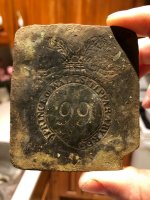49er12
Bronze Member
- Aug 22, 2013
- 1,238
- 1,630
- Detector(s) used
- Minelab xterra, Whites DFX, Notka Makro Simplex. Folks the price don’t mean everything, the question is are you willing to put in the time to learn the machine, experience will pay off I guarantee it.
- Primary Interest:
- All Treasure Hunting
Not going to apologize for my curious mind, but be open minded, even if we had a detector that could go 2 or 3 feet deep would that be insignificant to what is a depth not needed for coins. I guess what I’m saying is most coins are located within reason in undisturbed ground. I mean heck the oceans have much more than be imagined but is untouchable for reasons of the obvious getting to it. But on what we consider land , ground surface what percentage is very obtainable.i guess what can we expect to find afoot or so versus deeper , r we asthe saying goes so close but yet so far away, thanks








